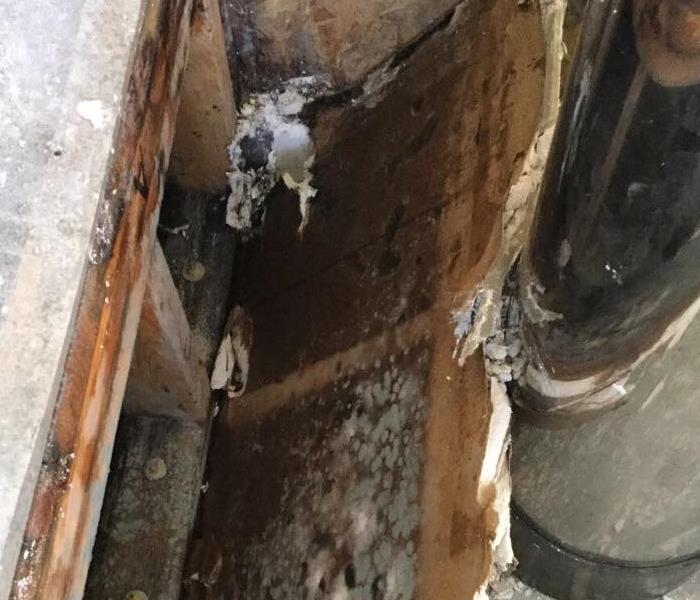7 Most Common Types of Mold Found In Homes
7/23/2019 (Permalink)
Dampness, warmth, lack of direct light, and poor ventilation almost inevitably make your home affected by mold. While there are many types of household mold (fungi), most of them are toxic and should be removed as soon as possible by a professional mold remediation company.
Remember, while mold colonies thrive in your home, the health of inhabitants and the integrity of home structures gradually decline. Understanding of how to distinguish between the most common types of mold will help you recognize the problem and correctly assess the hazards.
Hazard Classes of Common Mold Types Found in Homes
All types of indoor mold are grouped into 3 hazard classes in view of the associated health risk.
Hazard Class A molds are highly hazardous and directly impact health. Presence of Class A mold in your home requires immediate action and extreme caution.
Hazard Class B fungi are less hazardous. Still, prolonged exposure to this type of mold causes allergic reactions and symptoms like itchy eyes, rashes, chronic cough, headaches and tiredness.
Hazard Class C molds do not pose a risks to health, but they still cause damage to the structures, on which they thrive. Thus, they still need to be removed from households.
Most Common Types of Household Mold
Cladosporium
Cladosporium, recognized by mottled black and green appearance, is one of the most widespread types of mold. It is notorious for triggering asthmatic attacks and a variety of allergic reactions. It is common on wet wallpapers and window frames, carpets, HVAC insulation, and fiberglass air ducts. This type of mold is airborne and thrives in both warm and cold conditions, which make it rather difficult to remove.
Aspergillus
Aspergillus is a hazard class A type of mold that is commonly found in kitchens and bathrooms, on mattresses and carpets, as well as in air conditioning systems. Aspergillus matures in just three days darkening to various shades of brown, black, green or yellow. This type of mold causes eye and ear infections and serious respiratory conditions including asthma.
Stachybotrys
Stachybotrys is more familiar as black mold - a hazard class A mold that appears in areas that remain wet or damp for a longer period of time. Black mold grows on cellulose materials and is most commonly found on wallpapers, and wood. Stachybotrys causes sever health problems, including migraines, depression, fatigue, persistent cough, difficulty breathing and tightening in the chest, nose bleeds and pulmonary bleeding in infants.
Mucor
Mucor grows in thick white or grayish patches. This type of household mold is often found near the air conditioning, HVAC systems and ducting where it takes advantage of of condensation moisture or on old damp carpets. Mucor affects the respiratory system and causes flu-like symptoms. The most severe health problem associated with this mold is Mucormycosis that can damage the sinuses, lungs and even the brain.
Acremonium
Acremonium is a toxic hazard class A mold. This type of fungi has a distinct fouls smell, is pink, grey, orange or white in color, and turns from a moist mold to a powdery substance. It is typical of areas where condensation is present(near humidifiers, cooling coils, window sealants, etc.). Exposure to Acremonium is associated with serious bone marrow and immune system problems. It is also a known carcinogen with the potential to impair brain functions.
Aureobasidium
Aureobasidium is a hazard class B allergenic mold that can be typically found behind wallpapers on painted or wooden surfaces. As Aureobasidium grows and ages, it's color changes from pink and brown to dark brown. This type of mold causes eye, skin and nail infection. Touching Aureobasidium with bare skin can result in a rash and dermatitis.
Trichoderma
Trichoderma is an allergenic mold type thriving in moist areas. It can be distinguished by woolly green patches over a white color mold. Trichoderma is common of carpets, damp upholstery, in air conditioning filters and HVAC system ducts. Health hazards include pulmonary and liver infections. At the same time Trichoderma causes severe damage to building materials making structures rot and crumble. .





 24/7 Emergency Service
24/7 Emergency Service
